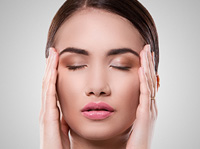What are Free Radicals?
Free Radicals are chemical molecules which have more than one unpaired electron in the outer shell (layer) of their molecule structure. The molecule tries to pair up its free electron with another and in doing so can cause different chemical reactions which lead to changes on a bio-molecular level within the body. The free radicals are often called ‘cations’
In the search for the ‘lost’ electron free radicals can start a chain reaction with cellular lipids, proteins, carbohydrates and enzymes as well as the cellular DNA itself. These reactions lead to cell damage which can often result in the death of the cell.
Smoking, incorrect eating habits exposure to harmful chemicals and radiation decreases the body’s natural defensive powers against controlling foreign organisms and increases the danger of free radical activity. So cells and tissue are constantly exposed to the affection of oxygen radicals which are taken in from outside the body, or of oxygen free radicals which are formed as the secondary products of some phases of metabolism processes. The cells and tissues are in constant danger of oxidative changes.
With its own antioxidant system (e.g. native enzymes) the cells protect themselves from the harmful free radical effects. However during a time of defensive system weakness cells become unable to stop the influence of the free radicals and as a result the cells are damaged which inevitably leads to disease.
The cell uses two different defensive mechanisms, one is its own which controls the creation of free radicals and repairs damaged tissues and the other is the use of natural antioxidants such as vitamins A, C and E, caroenoids, flavonoids, coenzymes Q10 and others. These natural antioxidants are taken into the body by way of food and different vitamins and mineral products.



